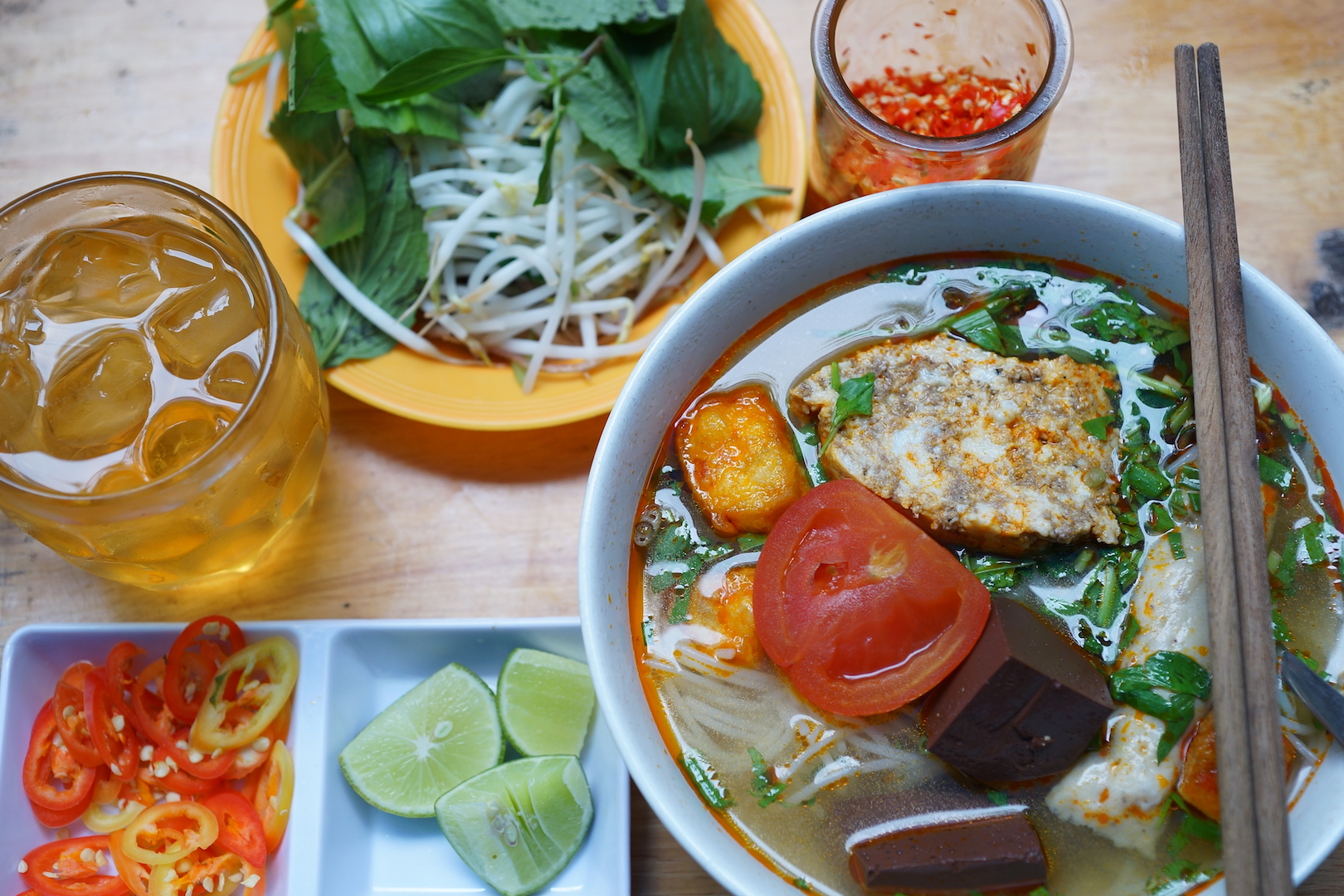What magical combination can possibly come from crabs, pig’s blood, fresh tofu, raw tomatoes, vermicelli, and herbs? It is bun rieu, a noodle dish so popular in Vietnam.
Bun rieu comes with four typical additions: cua (crab), tom (prawn), oc (snail), and ca (fish).
All varieties have some things in common: the vermicelli noodles, the fine broth, the toppings and the core protein ingredient.
The slender stripes of noodles for bun rieu are special and unique. They are not the rectangular sticky type found in pho (Vietnamese beef noodle soup), and not as wide as those found in Hue beef noodle soup.
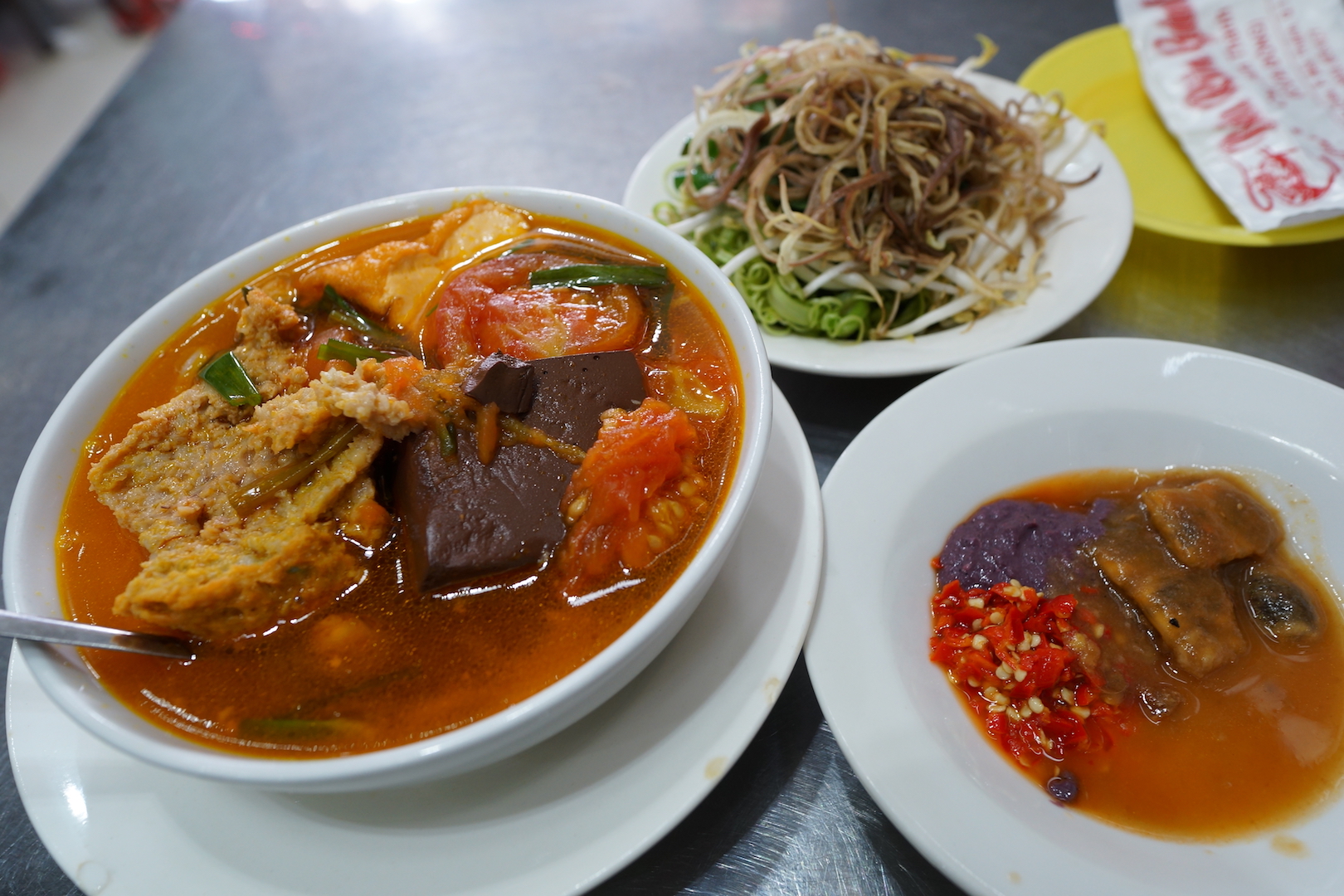 |
| A serving of bun rieu at Bun Rieu Ganh, with shrimp paste, tamarind and chilli in a separate plate, taken on January 23, 2018. Photo: Tien Bui |
Bun rieu’s vermicelli noodles are slender yet elastic, and do not expand when exposed to heated soup.
The fresh red broth owes its vibrancy and flavor to annatto oil, tomatoes, tamarind and sometimes cashew seeds. The broth is particularly clear and translucent when compared with some other Vietnamese noodle dishes.
Toppings include tofu in either small crunchy fried pieces or longer slices, tomatoes cut in halves or quarters, and pig’s blood!
The congealed pig’s blood is not in liquid form, but is finely cut into dark brown cubes. This special ingredient complements the dish perfectly, and has a very similar texture to jelly!
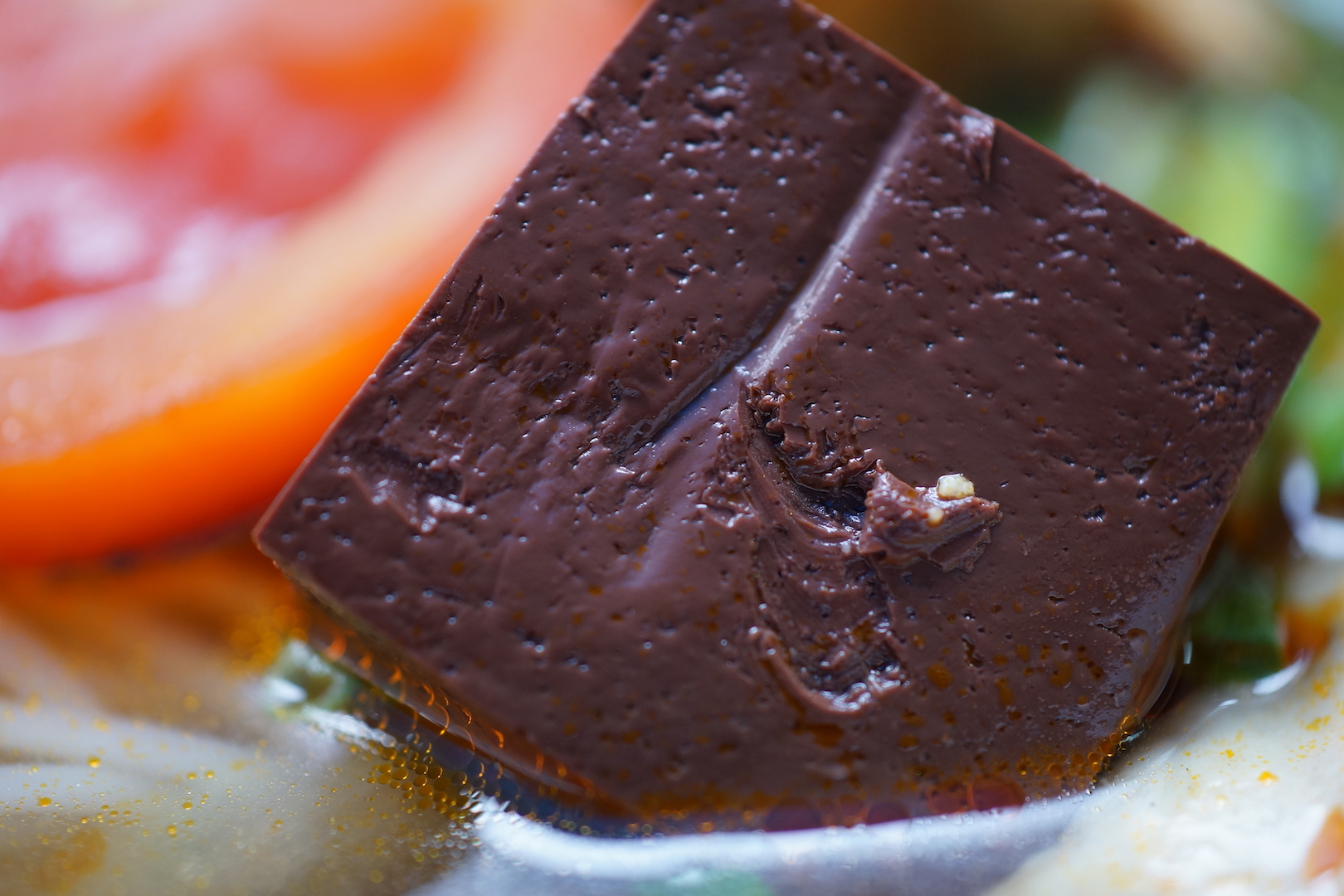 |
| A clotted blood cube in bun rieu, dark in color and a jelly-like consistency. Photo: Tien Bui |
Bun rieu cua features ground freshwater crabmeat which remains firm in the soup but gently dissolves in the mouth seconds after contact.
If handled with clumsy chopstick skills, the crabmeat can disintegrate and blend in with the broth.
This should not be a concern, as the delicious combination of crabmeat and noodles offers a tasty dining experience.
In comparison, bun rieu oc contains snails floating within the broth, ready to be gobbled up by chopsticks.
Whatever the variety, the sweetness of the broth is intensified by the aromatic (or stinky – depending on the diner's sense of smell) shrimp paste and sourness strengthened by the spicy chopped chili.
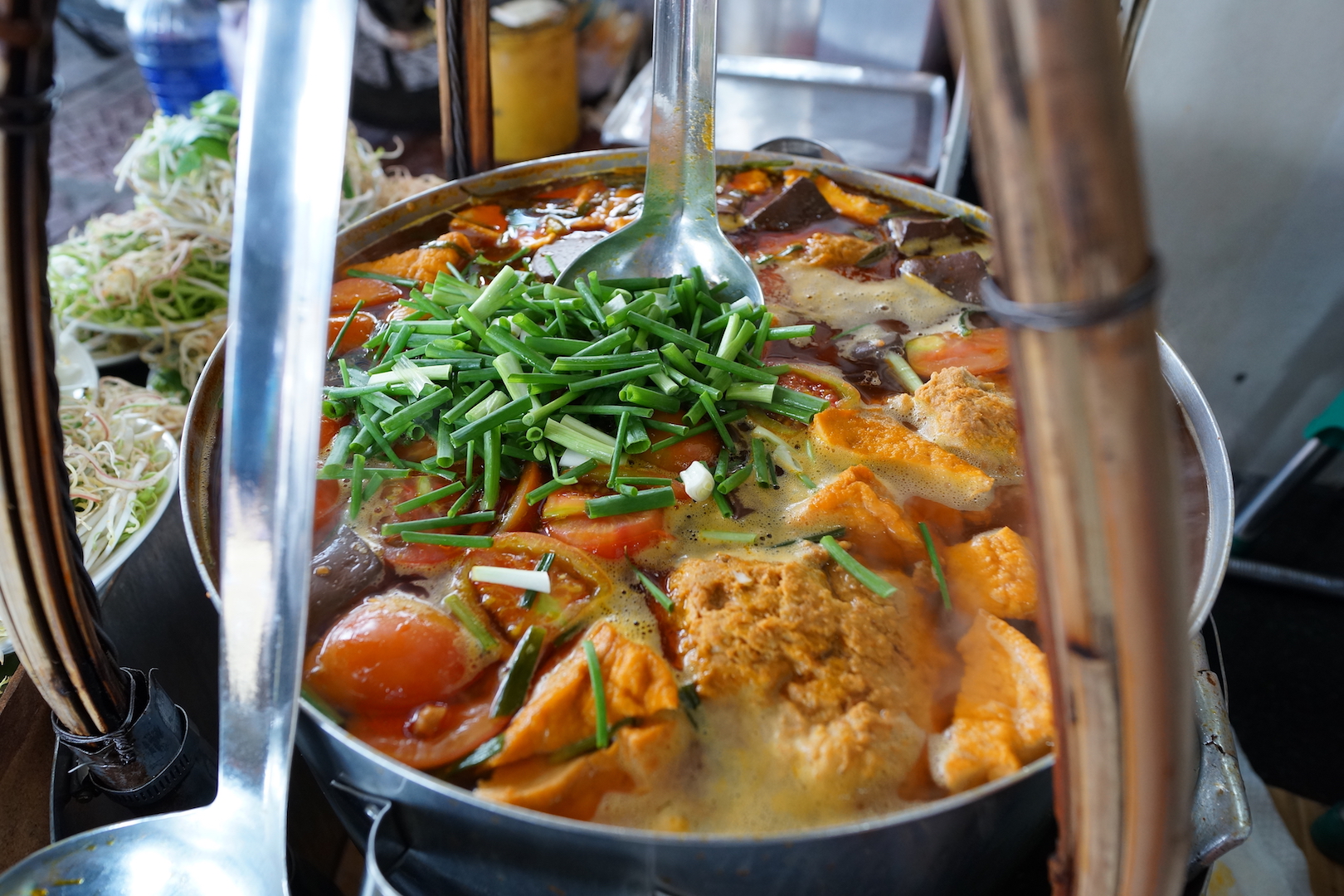 |
| The broth at Bun Rieu Ganh with tofu, crabmeat, tomatoes and many other ingredients, taken on January 23, 2018. Photo: Tien Bui |
Light, low-priced and sentimental
Bun rieu first appeared in Hanoi, and then slowly made it to the south of the country, with the taste and ingredients transforming during the journey.
In Saigon, bun rieu is normally associated with the average laborer, as it is a best-selling street food. However, some larger restaurants have begun to incorporate this special dish in their menu.
Cheaper than pho, and easier to digest than sticky rice, bun rieu has continually been a favorite choice for the breakfast of Saigonese people.
Street-side is the perfect place to enjoy the delicacy, with many locations found in all parts of town.
The price point of bun rieu is extremely low considering the astronomical cost of living in this prosperous city.
Auntie Sang (pronounced dzi sang in Vietnamese) has been making the best bun rieu in her area for almost 60 years.
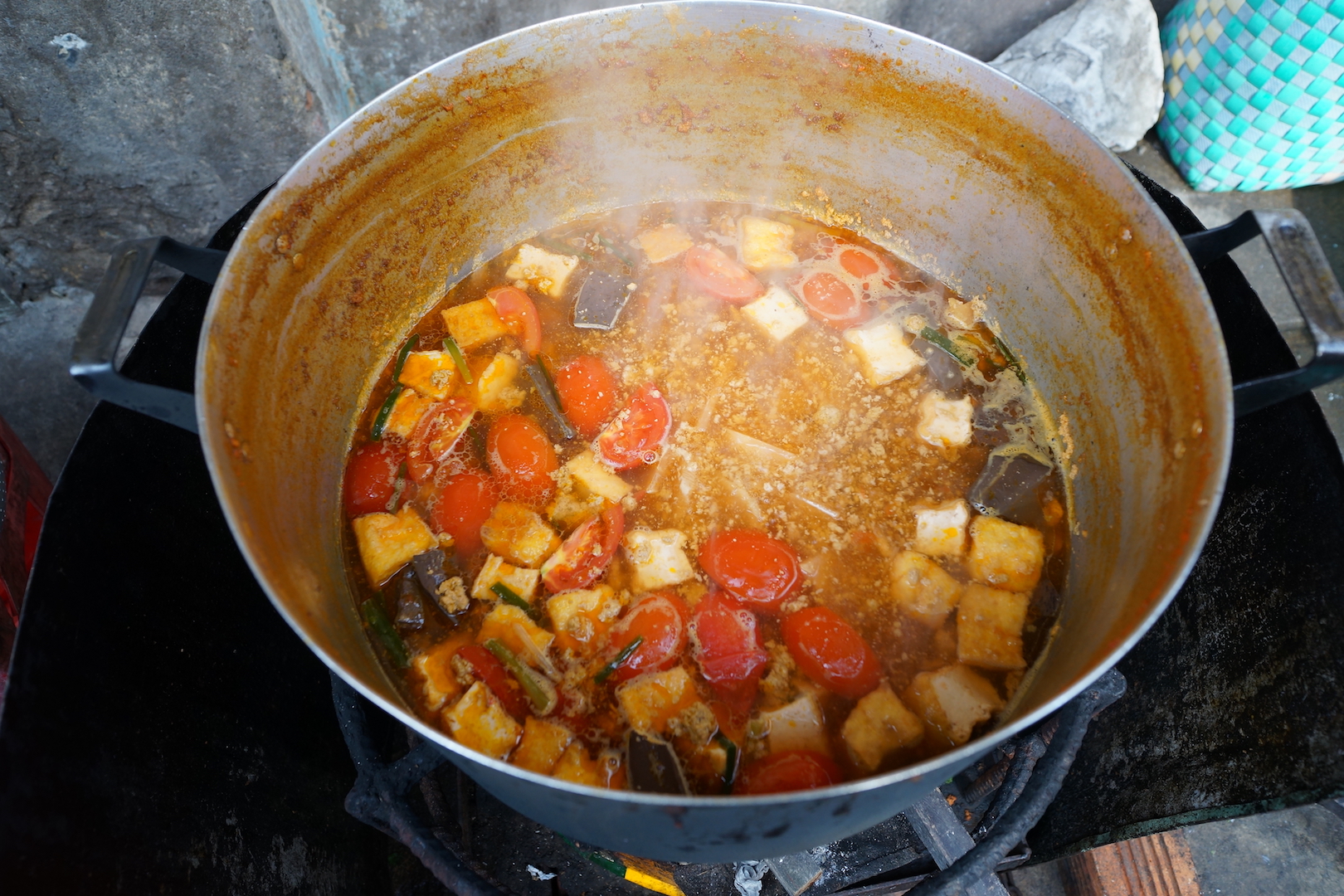 |
| A huge container of bun rieu broth made by Auntie Sang. Photo: Tien Bui |
Her tiny makeshift place can be found at 132 Cao Thang, Phu Nhuan District, next to a church at the end of an open market.
“It is more comfortable to come here at around 11:00 am, as the morning times are quite busy with too many customers and the police forces cracking down on us,” she humorously remarked.
Her location is often referred to as ‘bun rieu on the go,' because she actually violates pavement regulations and eaters have to park illegally too.
“I charge only VND15,000 [66 U.S. cents] a bowl because the poor manual laborers around here really don’t have a penny to their name,” she said, explaining her staggeringly low price.
One word of caution, however, this portion will not fill the stomach for those seeking a hearty breakfast.
Places like hers and many other street peddlers with low plastic tables and stools can be a tad grimy, but that is the local way of life.
For those more concerned with hygienic standards, Bun Rieu Ganh at 4 Phan Boi Chau Street, opposite Ben Thanh Market in District 1, is the preferable option.
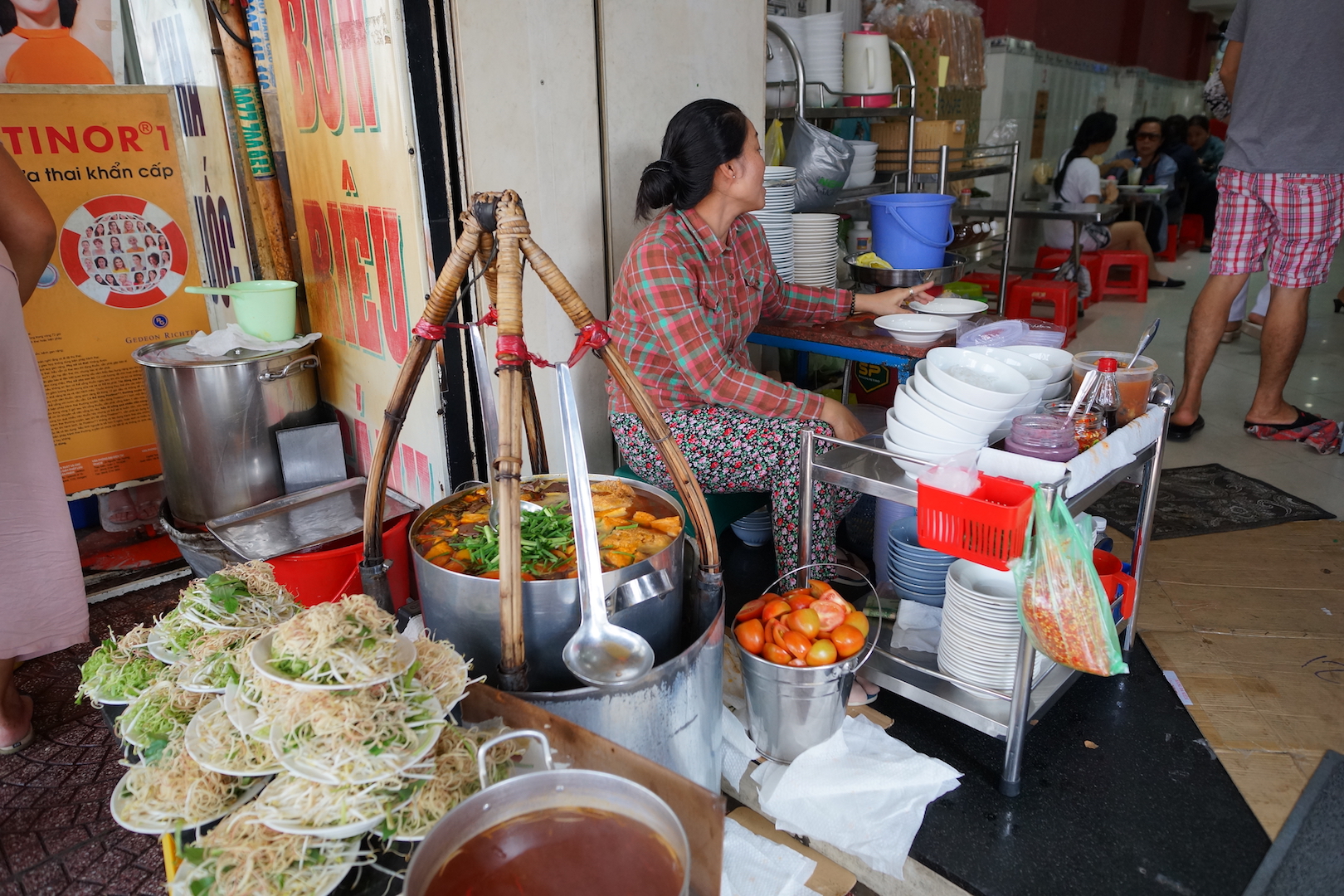 |
| The chef at Bun Rieu Ganh by her colorful workplace, taken on January 23, 2018. Photo: Tien Bui |
The price is much higher at VND50,000 ($2.20)/bowl, but is absolutely reasonable considering the location, quality and cleanliness.
The owner even offers delivery services around town.
This simple noodle dish has touched the hearts of many Saigonese, and can be considered similar to a childhood memory; unfading despite the harshness of time.
Do Thi Huynh Hoa, a contributor to Tuoi Tre (Youth) newspaper, spoke of the snail-based bun rieu oc sold by a street hawker on the corner of Le Thanh Ton-Nguyen Trung Truc in District 1:
“My friend [a Vietnamese expat living abroad] has dreams about the chubby fried snails with the fat so tempting, the palm-sized clotted blood cubes, and the tender slices of tofu.”
Indeed, many have agreed that bun rieu brings about a sense of nostalgia for Saigon, a metropolis rich with sentimental souls.
Like us on Facebook or follow us on Twitter to get the latest news about Vietnam!



